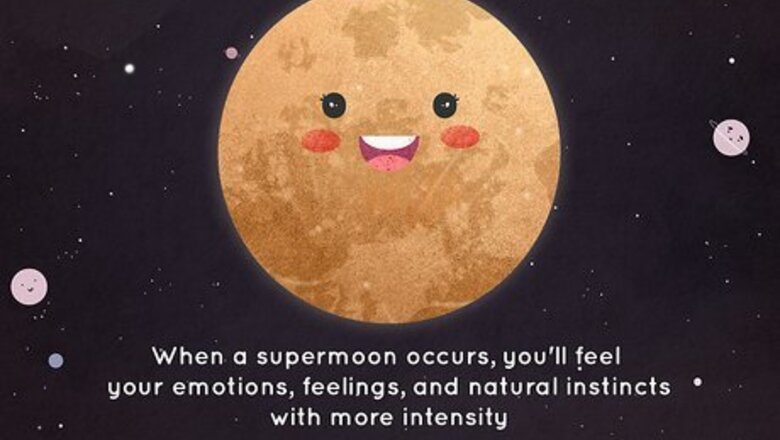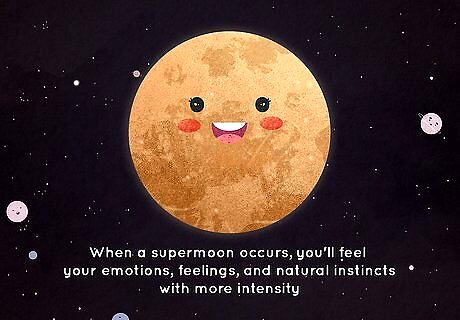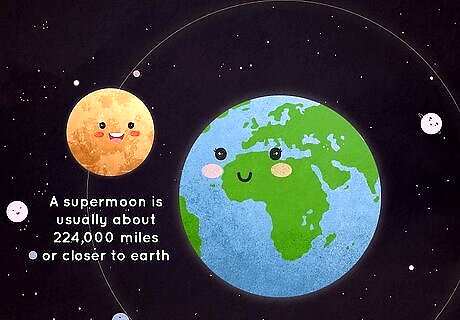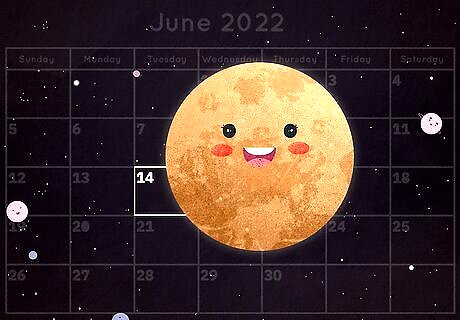
views
What do supermoons symbolize in astrology?

Supermoons enhance and deepen your emotions. In astrology, the moon represents your underlying emotions. Your moon sign, for example, represents your inner self (including your emotions, feelings, and natural instincts). When a supermoon occurs, you'll feel these emotions with more intensity. The supermoon's effect changes depending on where it falls on the zodiac calendar, as well. Repressed feelings or desires may come to light during a supermoon. You may experience more tension in your relationship if you've been hiding from how you really feel. If a supermoon is in Aquarius, for example, you'll likely feel drawn to give back to your community or invest in creative pursuits.
What is a supermoon?

A supermoon describes when the moon's orbit is closest to earth. Astronomers refer to this point on the moon's orbit as perigee. When the moon reaches perigee, the moon appears much larger than usual from earth. Some astronomers only refer to the closest new moon and full moon as supermoons, but many publications consider a moon a supermoon as long as it gets close to perigee (within about 90% of the closest point). The official term for a supermoon is perigee syzygy. A supermoon is usually about 224,000 miles (360,000 km) or closer to earth. There will be 2 supermoons in 2022.
When are the supermoons in 2022?

June 14th, 2022 - Supermoon in Sagittarius. The first supermoon of 2022 will be this coming June. This full moon is often referred to as the Strawberry Moon, as it is the last full moon of spring (the period when fruits and berries grow ripe). The supermoon will be in Sagittarius according to the zodiac calendar, which might inspire you to experience wanderlust and a desire for new adventures. The supermoon will occur at 7:52 AM EST.

July 13, 2022 - Supermoon in Capricorn. The second supermoon of 2022 will occur in July. This full moon is called the Buck Moon. The moon will be in Capricorn according to the zodiac calendar, which might encourage you to analyze your ambitions, goals, and calling in life. The supermoon will occur at 2:38 PM EST. The Algonquin tribes originally called this full moon the Buck Moon since this period of summer is often when deer grow their new antlers. This full moon is also referred to as the Thunder Moon due to the common thunderstorms during this point of summer.
The History of Supermoons

The term supermoon was coined in 1979 by astrologer Richard Nolle. Historically, supermoons have been thought to influence seismic activity on earth, increasing the risk of earthquakes and volcanic eruptions (this myth has since been discredited by scientists). The supermoon does, however, increase the pull of ocean tides. Since the moon is closer to earth during a supermoon, its gravitational pull is stronger. This contributes to higher tides than usual. Though the term supermoon was originally coined by an astrologer, the term has since been adopted by scientists and astronomers.




















Comments
0 comment